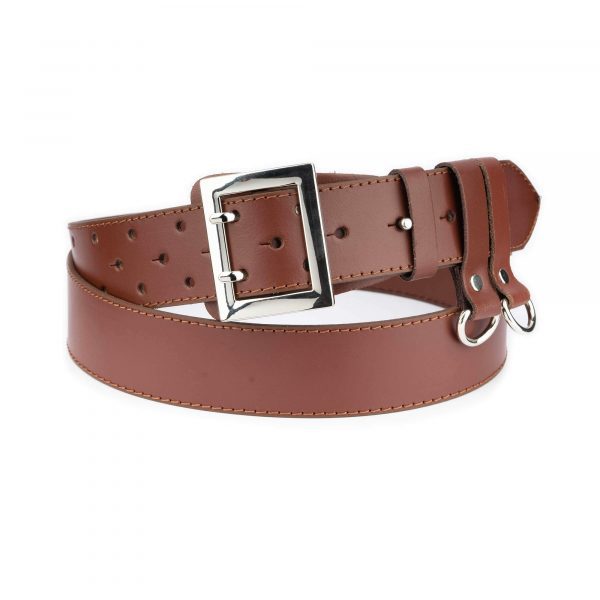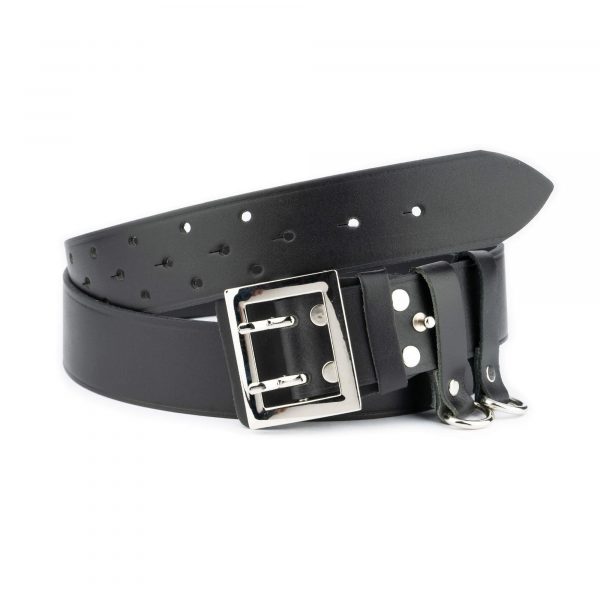Introduction
A police duty belt is a vital piece of equipment worn by law enforcement officers, providing them with quick access to essential tools while on duty. It is a utility belt that holds various items, ranging from firearms and ammunition to handcuffs, batons, flashlights, radios, and pepper spray. The duty belt serves as a mobile tool kit that allows officers to respond swiftly to emergencies and maintain control in critical situations. In this article, we will delve into the significance of police duty belts, the various components they consist of, and their crucial role in ensuring officer safety and efficiency.
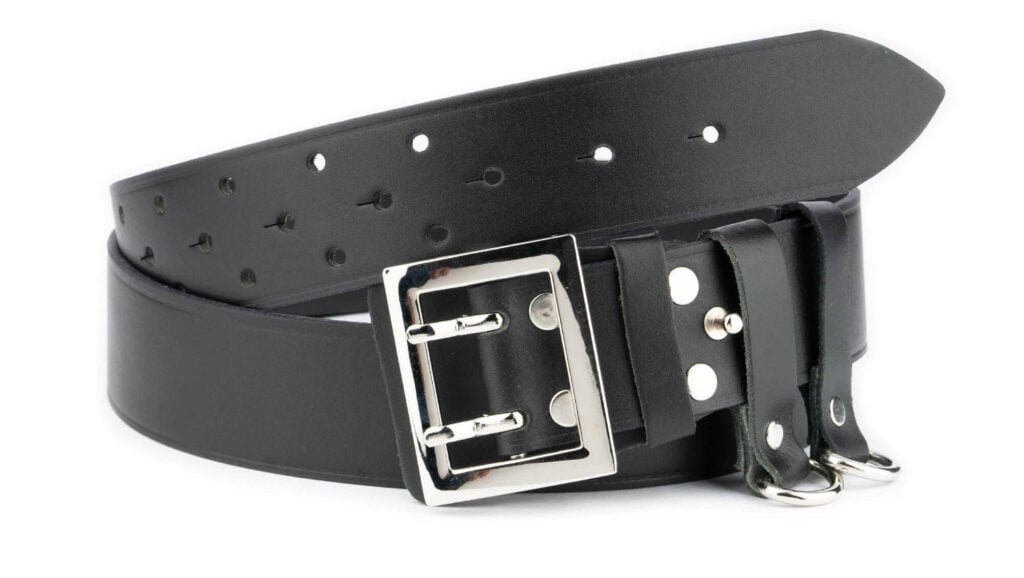
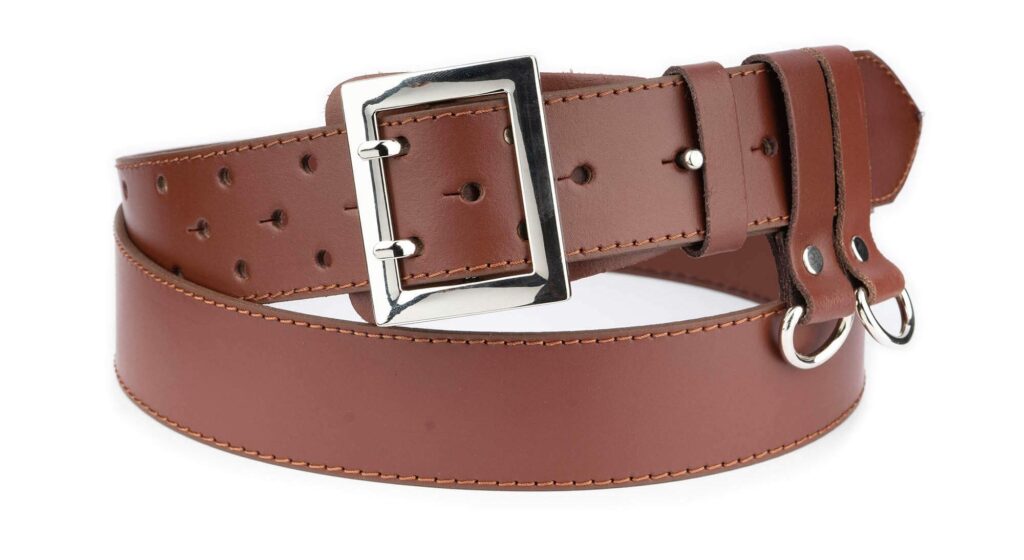
The Importance of Police Duty Belts
Carrying Essential Equipment
One of the primary reasons why police duty belts are indispensable for law enforcement officers is their ability to carry essential equipment. Each item on the belt serves a specific purpose, and officers rely on them to perform their duties effectively. The duty holster securely holds the officer’s firearm, ensuring it is readily available when needed for self-defense or to protect others. Magazine pouches store extra ammunition to ensure officers have an ample supply of bullets during engagements. Handcuff cases keep handcuffs accessible for quick restraint of suspects, while baton holders allow for easy deployment of batons for defensive measures. Additionally, flashlight holders, radio holders, and pepper spray pouches provide quick access to these critical tools, enhancing an officer’s response capabilities.
Easy Access to Gear
During high-stress situations, officers must be able to access their gear swiftly and efficiently. The design of the duty belt facilitates easy reach and retrieval of each item, minimizing response time and increasing officer safety. In fast-paced and dynamic encounters, seconds can make a significant difference in the outcome, and the duty belt’s accessibility plays a crucial role in the officer’s ability to respond effectively.
Ensuring Officer Safety
Safety is paramount for law enforcement officers, and a properly configured duty belt can enhance their safety in multiple ways. First, the duty belt keeps potentially dangerous items securely in place, preventing unauthorized access and reducing the risk of accidental discharge or misuse of equipment. Second, by organizing essential tools on the belt, officers can maintain situational awareness, keeping their focus on the surroundings rather than fumbling through pockets or bags. Lastly, a securely fastened duty belt reduces the risk of losing critical gear during pursuits or altercations, preventing any weapon or equipment from falling into the wrong hands.
Components of a Police Duty Belt
A typical police duty belt consists of several key components, each serving a specific purpose:
Duty Holster
The duty holster is one of the most critical components of the police duty belt, designed to securely hold the officer’s firearm. It often features retention mechanisms such as thumb breaks or hood guards to prevent unauthorized access to the weapon. A well-designed duty holster allows officers to draw their firearms quickly and smoothly when needed, ensuring they can respond rapidly to threats.
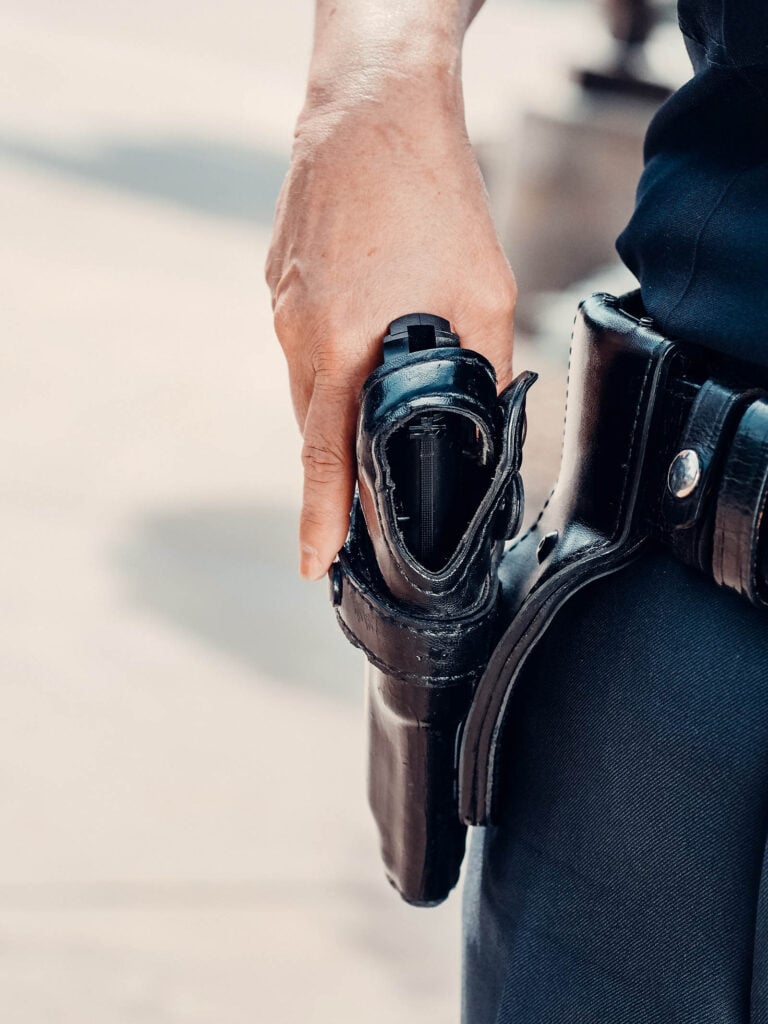
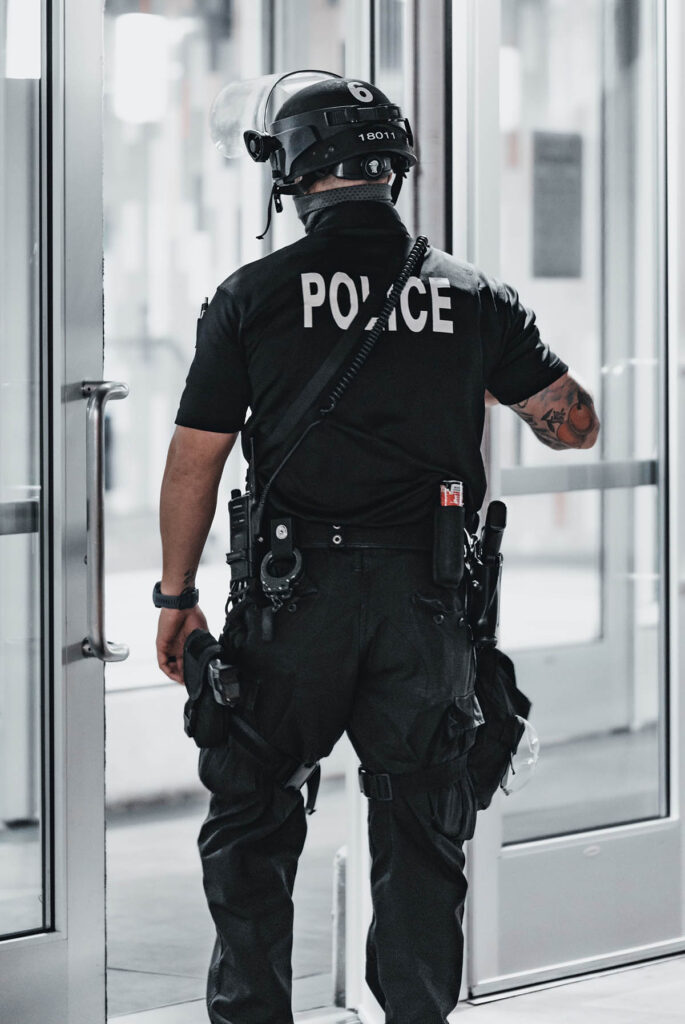
Magazine Pouches
Magazine pouches are essential for carrying extra ammunition for the officer’s firearm. During high-stress situations or extended engagements, having access to additional bullets can be the difference between resolving a situation safely and being ill-prepared.
Handcuff Case
A handcuff case securely holds the officer’s handcuffs, ensuring they are readily accessible when apprehending suspects. Handcuffs are a primary tool for restraining individuals safely and efficiently, and quick access is essential to maintain control over a potentially dangerous situation.
Baton Holder
The baton holder keeps the officer’s baton in place when not in use. Baton use is considered a level of force escalation, and officers must have their batons readily available for defensive measures if verbal communication fails to de-escalate a situation.
Flashlight Holder
A flashlight holder is a crucial accessory for officers, especially during low-light situations or nighttime patrols. Illumination is necessary for maintaining situational awareness, searching dark areas, and identifying potential threats.
Radio Holder
The radio holder keeps the officer’s communication device within easy reach, facilitating constant contact with the department and fellow officers. Effective communication is vital for coordinating responses, requesting backup, and receiving critical information.
Pepper Spray Pouch
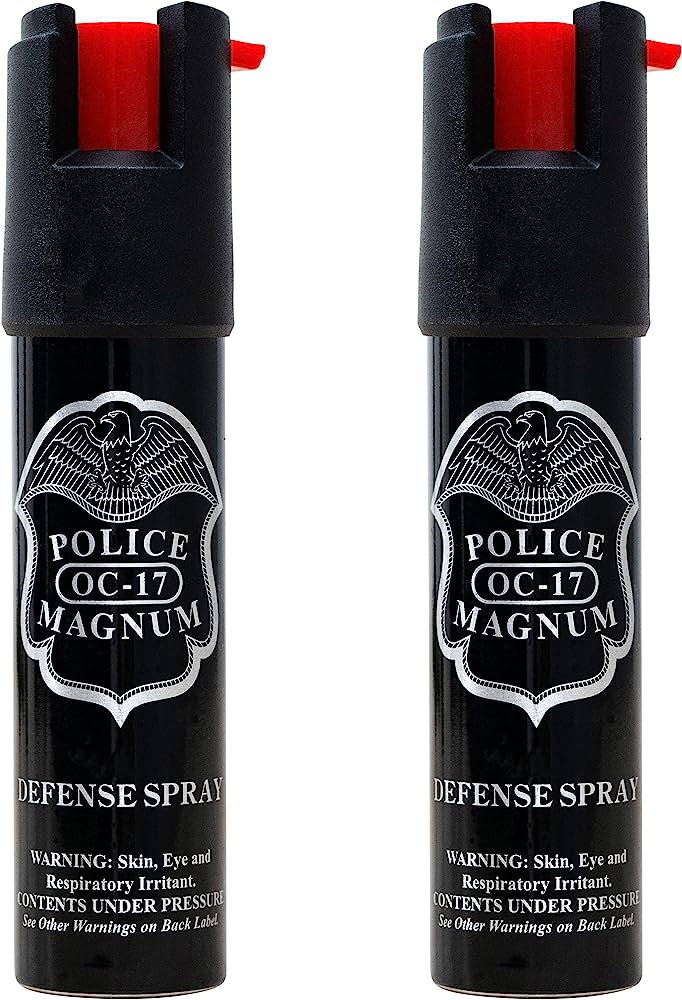
The pepper spray pouch houses the officer’s pepper spray canister, a non-lethal option for subduing suspects. Pepper spray is an essential tool for controlling aggressive or combative individuals while minimizing the risk of causing severe injury.
Selecting the Right Duty Belt
Choosing the right duty belt is essential for an officer’s comfort, functionality, and safety. Several factors should be considered when selecting a police duty belt:
Material and Durability
Duty belts are commonly made from leather, nylon, or a combination of both. Each material has its advantages and disadvantages, and officers must choose based on their specific needs and preferences. Leather belts are durable, sturdy, and offer a classic look, but they may require more maintenance. On the other hand, nylon belts are lightweight, resistant to moisture, and easy to clean, making them a popular choice among officers.
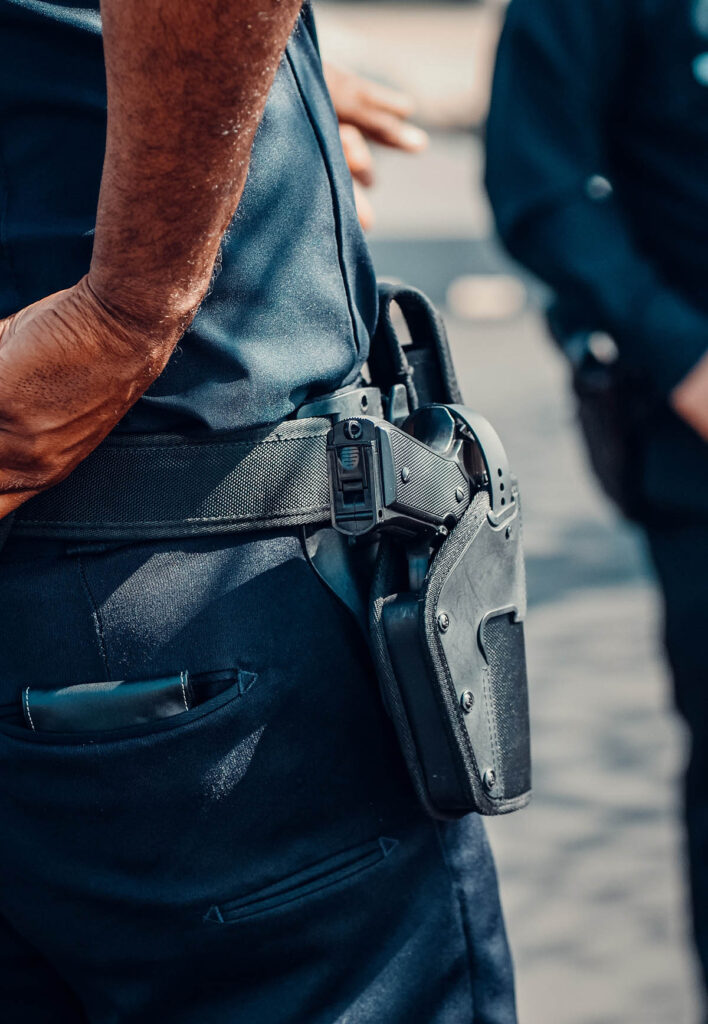
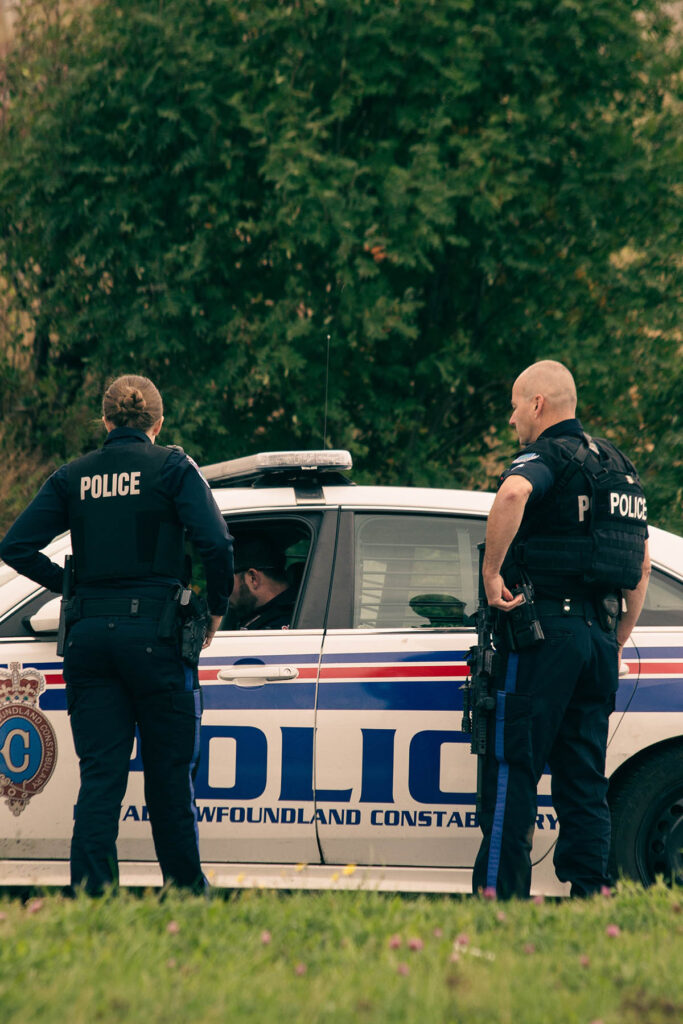
Comfort and Fit
An ill-fitting duty belt can cause discomfort and even lead to chronic injuries for officers who wear them for extended periods. The weight of the gear, combined with the belt’s design, can put strain on the lower back and hips. Therefore, finding the right size and adjusting the belt to distribute weight evenly is vital for an officer’s well-being and mobility.
Adjustability
A good duty belt should be adjustable to accommodate changes in the officer’s uniform or gear setup. Officers often wear additional layers of clothing in colder weather or need to adjust the belt as they switch equipment. A belt with adjustable features ensures a snug fit regardless of the officer’s attire.
Modular vs. Traditional Duty Belts
In recent years, modular duty belts have gained popularity among law enforcement professionals due to their flexibility and versatility. Modular belts allow officers to add or remove pouches and accessories based on their specific needs and assignments. This customization option makes it easier to adapt the belt to different roles or duties. In contrast, traditional duty belts come with fixed pouches and may offer less flexibility in gear arrangement. Officers should carefully consider their preferences and requirements before deciding between a modular or traditional duty belt.
Proper Police Duty Belt Setup
A well-organized duty belt setup is essential for smooth operations and quick access to gear. The following considerations can help officers optimize their duty belt arrangements:
Distributing Weight Evenly
One of the most critical aspects of setting up a police duty belt is distributing the weight of gear evenly. Proper weight distribution reduces the risk of discomfort and strain on the officer’s back and hips. Placing heavier items, such as the firearm and spare magazines, on opposite sides of the belt helps maintain balance. Officers should regularly assess their gear setup and make adjustments as necessary to achieve optimal weight distribution.
Training and Familiarity
While a well-organized duty belt is essential, officers must also undergo training to become proficient in accessing their gear efficiently and confidently during high-stress situations. Repeated practice and familiarization with the duty belt’s layout are crucial for muscle memory, ensuring officers can instinctively retrieve the right tools when needed. This level of training improves response times and can be instrumental in critical incidents.
Maintenance and Care of Police Duty Belts
Regular maintenance and care are necessary to keep police duty belts in top condition and ensure reliable performance when needed most. Proper upkeep involves the following:
Cleaning and Inspection
Officers should regularly clean their duty belts and inspect each component for signs of wear or damage. Dirt, debris, and sweat can accumulate on the belt and equipment, potentially affecting functionality. A simple wipe-down with a damp cloth can help keep the duty belt clean, while a more thorough cleaning with mild soap can be done as needed. During cleaning, officers should also check for any fraying, loose stitching, or other signs of wear on the belt, pouches, and holster. Timely identification of issues allows for prompt repairs or replacements, ensuring that the belt remains fully functional and reliable.
Replacing Worn-out Gear
As with any equipment, police duty belt components have a finite lifespan. Over time, gear may experience wear and tear, particularly if it is frequently used. Officers should routinely assess the condition of their duty belt and replace any worn-out or damaged items. Replacing components proactively ensures that officers are always equipped with gear that operates optimally and reduces the risk of equipment failure during critical incidents.
Advancements in Police Duty Belt Technology
As technology continues to advance, police duty belts have also evolved to incorporate innovative features and designs. Some notable advancements in police duty belt technology include:
Retention Systems
Modern duty holsters often feature advanced retention systems that provide additional security for the officer’s firearm. Retention systems use various locking mechanisms to hold the firearm securely in the holster, preventing unauthorized access while still allowing for a quick and smooth draw when needed. These systems offer a balance between accessibility and security, ensuring that the firearm remains secure during regular duties while allowing officers to draw their weapons swiftly in emergencies.
Attachment Options
Modular duty belts provide officers with the flexibility to attach various accessories and customize their gear setup according to their specific needs. This level of customization allows officers to tailor their duty belts to their assignments or roles. For example, a tactical unit may require additional pouches for specific tools, while an officer on patrol may prioritize a slimmer and more streamlined setup. Attachment options can include MOLLE (Modular Lightweight Load-carrying Equipment) webbing, hook-and-loop fasteners, or even snap buttons, providing a secure and versatile platform for gear attachment.
Integrated Body Cameras
Body-worn cameras have become an essential tool for law enforcement agencies to ensure transparency and accountability during interactions with the public. Some police duty belts now incorporate integrated body camera systems. These cameras are strategically positioned to capture the officer’s perspective, providing valuable video footage of encounters and actions taken during incidents. The integration of body cameras into duty belts streamlines the recording process and ensures that officers are equipped with this vital tool at all times.
Addressing Concerns and Controversies
While police duty belts are crucial tools for law enforcement, they are not without concerns and controversies:
Discomfort and Injuries
The weight of the duty belt and prolonged wear can lead to discomfort and even chronic injuries for some officers. Police duty belts can be heavily loaded with gear, placing strain on the lower back, hips, and shoulders. Officers who wear duty belts for extended periods must be mindful of their ergonomics and seek out solutions to minimize the risk of long-term injuries.
Public Perception
The visibility of duty belts, particularly when heavily equipped, can influence public perception of law enforcement officers. Some critics argue that heavily armed and equipped officers may come across as intimidating or militarized. To strike a balance between maintaining readiness and fostering positive community relations, law enforcement agencies must carefully consider the optics of duty belt setups and communicate the necessity of specific equipment to the public.
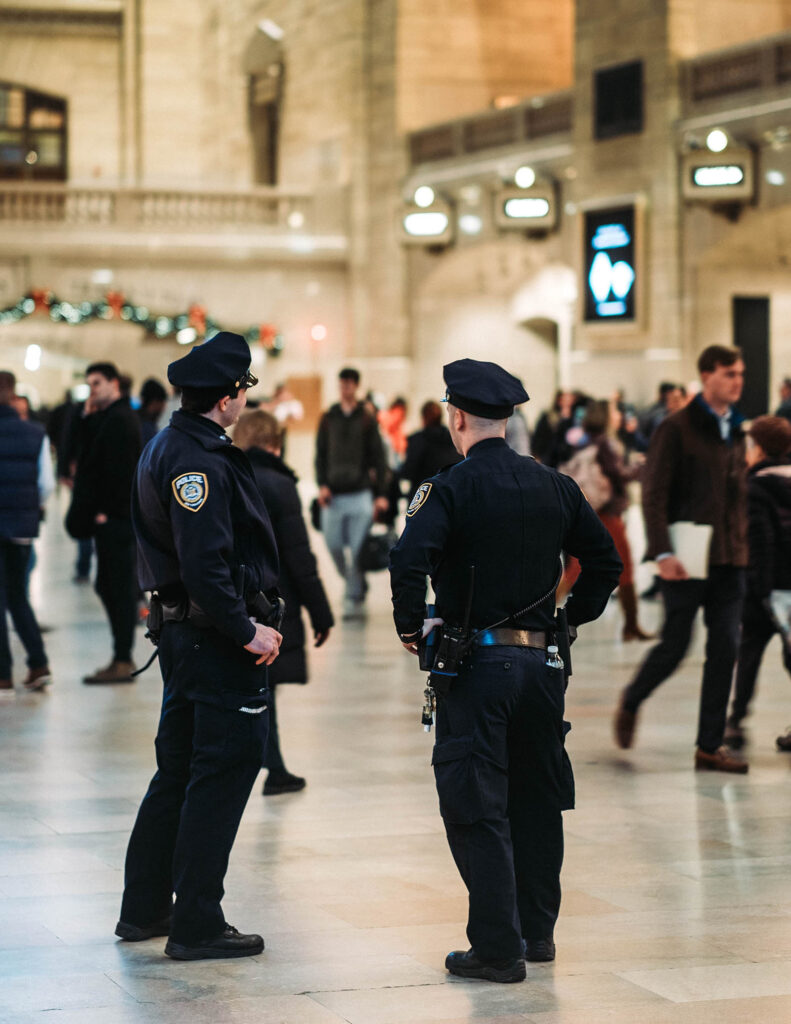
The Future of Police Duty Belts
As technology and materials continue to improve, we can expect more innovative and ergonomic designs for police duty belts. Manufacturers and law enforcement agencies are constantly exploring ways to improve the comfort, functionality, and safety of duty belts. The focus will likely be on maximizing functionality while minimizing the physical strain on officers. Potential future developments may include lightweight and durable materials, ergonomic designs to distribute weight more effectively, and enhanced retention systems for better security and accessibility.
Conclusion
The police duty belt remains a vital accessory for law enforcement officers, providing quick access to essential equipment and enhancing officer safety and efficiency. Its significance in carrying essential tools, ensuring easy access during high-stress situations, and promoting officer safety cannot be overstated. By selecting the right duty belt, setting it up correctly, and performing regular maintenance, officers can optimize their gear arrangement and ensure the belt operates smoothly when needed most. As technology continues to advance, police duty belts will likely evolve further, reflecting the ongoing commitment to improving officer safety and effectiveness.
FAQs
Q1: Can officers customize their duty belts based on their preferences?
Yes, many duty belts offer modular options that allow officers to customize the gear arrangement according to their needs and preferences. This level of customization enables officers to tailor their duty belts to specific assignments or roles, ensuring they have the tools they need readily available.
Q2: Are nylon duty belts as durable as leather ones?
Nylon duty belts are durable and resistant to moisture, making them a popular choice among law enforcement professionals. While leather belts offer a classic look and may be preferred by some, modern nylon materials have proven to be both durable and lightweight, capable of withstanding the demands of daily police work.
Q3: Can duty belts accommodate different types of firearms?
Yes, duty holsters are designed to fit various types and models of firearms, ensuring officers can carry their preferred weapon securely. Whether an officer carries a semi-automatic pistol or a revolver, there are duty holsters available to accommodate different firearm styles.
Q4: Are integrated body cameras in duty belts mandatory?
The integration of body cameras into duty belts is not mandatory in all law enforcement agencies, but it is becoming increasingly common as agencies prioritize transparency and accountability. Integrated body cameras streamline the recording process and ensure officers are equipped with this vital tool during their duties.
Q5: Can duty belts cause back pain?
Improperly set up or overloaded duty belts can cause back pain and discomfort. The weight of the gear, combined with extended wear, can put strain on the lower back and hips. Proper weight distribution, regular adjustments, and ergonomic designs are essential to mitigate this issue and ensure officer comfort and well-being.

Thank you for taking the time to read my blog article. I am grateful for your interest and support. I hope the information I shared was useful and informative. If you have any questions or comments, please feel free to reach out. Your feedback is always welcome.
Sincerely yours,
James Cooper
-
Product on saleMens Police Belt – Brown Genuine LeatherOriginal price was: $65.00.$45.50Current price is: $45.50.
-
Product on salePolice Duty Belt – Black Genuine LeatherOriginal price was: $75.00.$60.00Current price is: $60.00.


